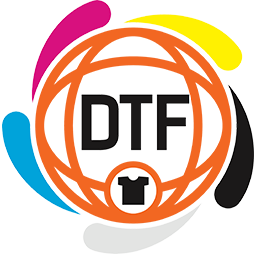
When it comes to Direct-to-Film (DTF) printing, the quality of the final product depends heavily on the artwork you provide. The right file type and resolution are essential to ensure your designs are clear, crisp, and vibrant. Here’s a breakdown of what you need to know about artwork for DTF printing.
File Types
Vector Files:- Ideal for logos or designs that need to be scaled to any size without losing quality. Files like .AI, .EPS, and .CDR are vector-based and maintain clarity at any size.
Raster Files:
- These files, like JPEG, PNG, and PSD are made of pixles. While they work for more designs, be careful with resolution. Files with a lower resolution may not print well when scaled up. Always aim for atleast 300 DPI to ensure high- quality prints.
Design Programs
Adobe Illustrator: Best for creating vector-based artwork, offering flexibility in scaling and color adjustments.Adobe Photoshop: Useful for raster designs, especially when layered and saved in high resolution (300 DPI).
CorelDraw: Another vector-based option, perfect for printing in various formats.
Tips for Preparing Artwork
- Use High-Resolution Files: Always ensure your artwork is set to at least 300 DPI to avoid pixelation or blurriness.
- Remove Unwanted Backgrounds: If using .JPEG or .PNG, make sure the background is removed if it’s not part of the design.
- Vector Files are Best: Whenever possible, work with vector files for clean, scalable artwork.
Preparing for Print
- Mirroring the Design: DTF designs are printed in reverse, so ensure the artwork is mirrored before printing.
- Check Overprint: Ensure no overlapping colors or misaligned layers will affect the final result.
Test Prints
- Always perform a test print to check for alignment, color accuracy, and quality. Adjust as needed.
Software Tools
- Programs like Adobe Photoshop, Illustrator, CorelDRAW, or free alternatives like GIMP or Inkscape are great for preparing artwork for DTF printing.
Tips for Success
- Know Your Substrate: Different fabrics (cotton, polyester, blends) may yield different results.
- Heat Settings: Be familiar with the required temperature and pressure for the adhesive layer during transfer.
- Design Complexity: Simplify overly intricate designs, especially for smaller prints.
By understanding these key factors, you’ll be well on your way to creating designs that are perfect for DTF printing. At Buy Bulk DTF, we recommend providing high-quality artwork to ensure your prints turn out looking sharp and professional.
Premium Hot Peel DTF Transfers – Built for Speed, Designed for Quality
Step up your game with our Premium Hot Peel Transfers – the ultimate choice for professional apparel decorators who demand vibrant colors, buttery-smooth finishes, and rapid production. These transfers press cleanly at 300°F in just 15 seconds and peel instantly while hot—no waiting, no cracking, no compromise.
Buy Bulk DTF




